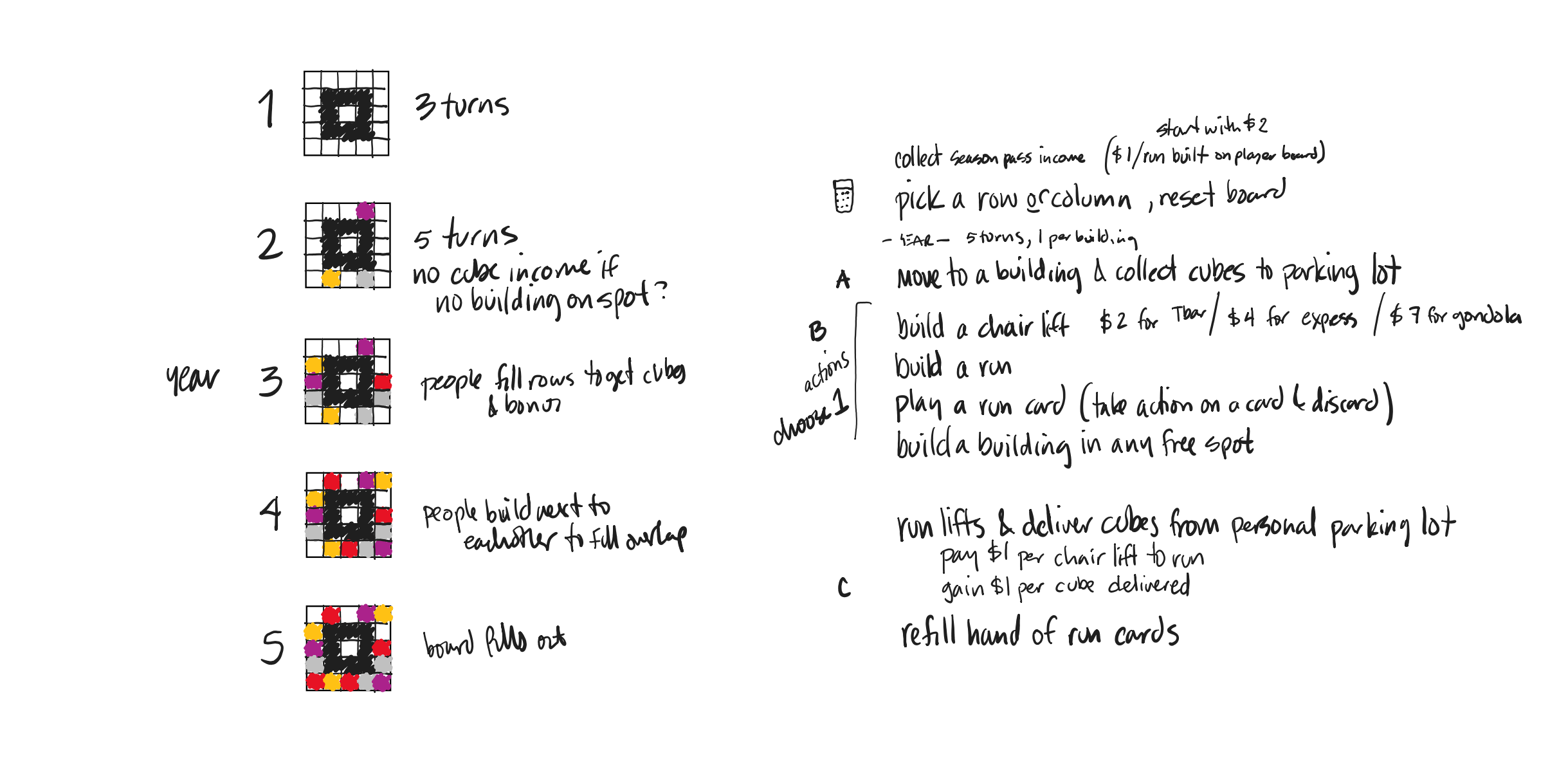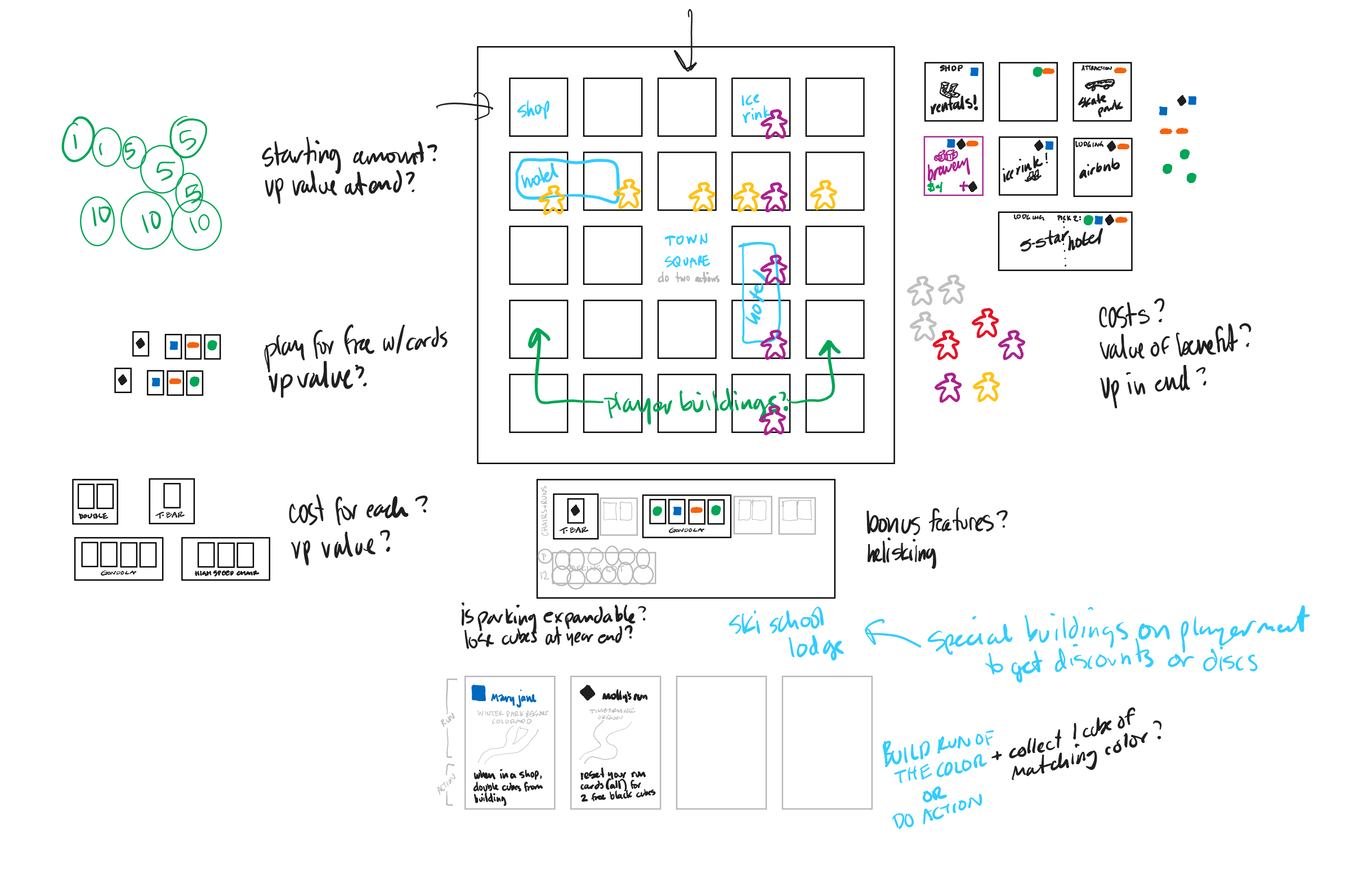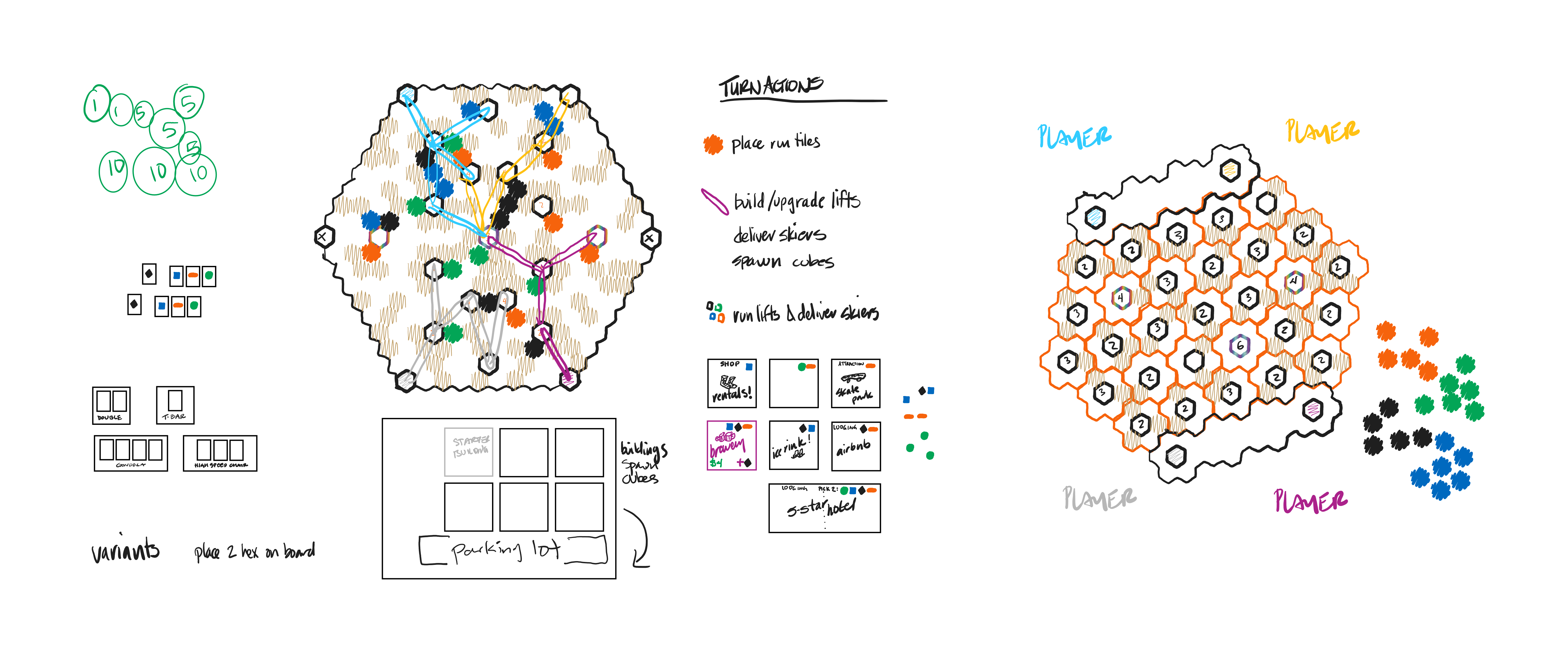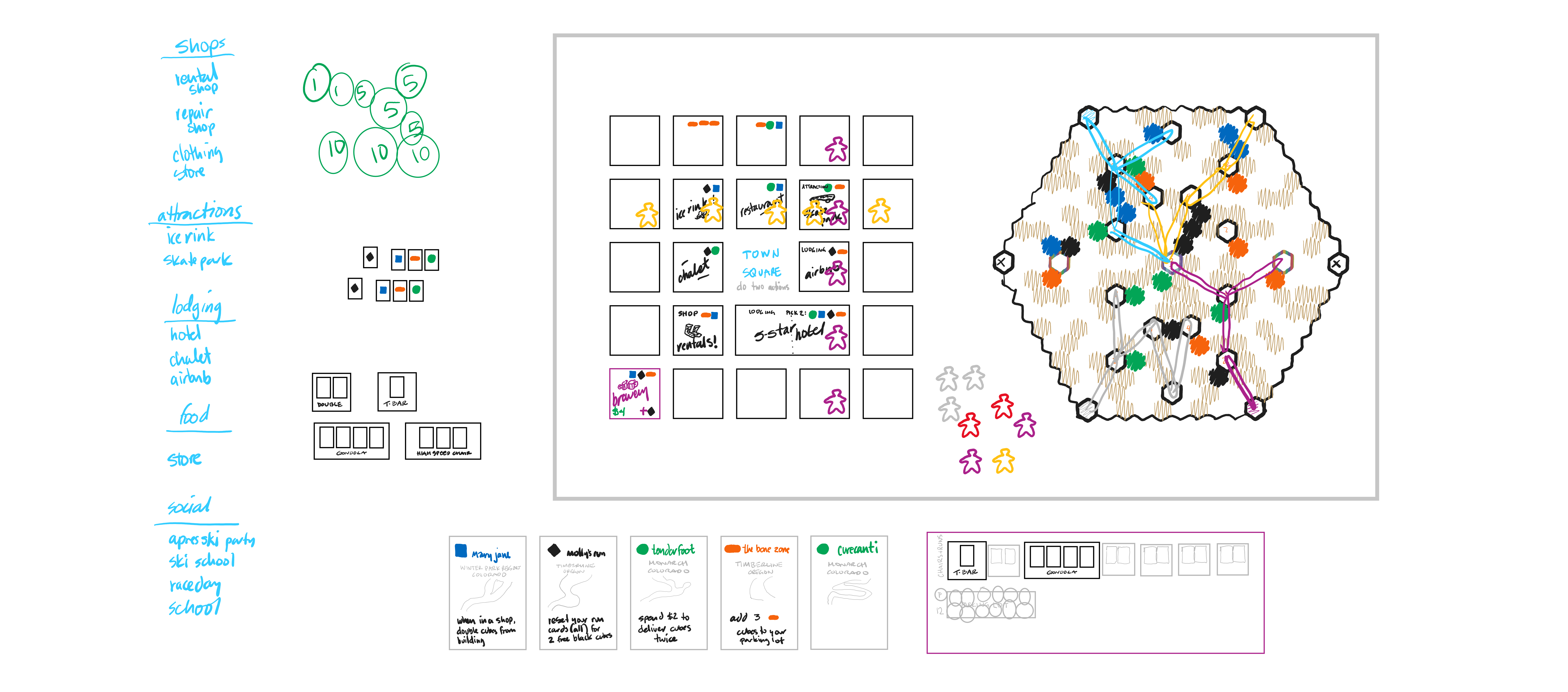Alpenglow Design Process
1. It Started with the Theme
A creative discussion in a car on the way to get a Christmas tree turned into the foundation of Alpenrose, a ski resort themed.
Following a lively week of learning a new game, Liaboa, I found myself in the car talking about what it would be like to design a game of my own. My wife and I have been gamers for years but started down the slippery slope of the more complex euro-style strategy games when we were introduced to Great Western Trail. We followed that with Maracaibo, Pipeline, Clank, Wingspan, King of Tokyo, Camel Up, and so on. You get the picture, we love to play games and the heavy weight ones seemed to pique our interest.
The first question that started it all was theme - what kid of game would it be. We both looked at each other and had the same idea - something related to skiing (a passion of ours). We started to think about if we had ever seen a ski-themed game but the thoughts quickly turned to what would it look like, and how would it work. Having played various games sporting a variety of mechanisms, we dove into what we liked from our favorite games, maybe we could make something that cherry-picks the best from them all.
A general theme and two separate ideas stemmed from this discussion. We wanted to make a game where you would build your own ski area so that would become our guiding theme. This brings up all of the questions surrounding the narrative and how closely we wanted the game to stick to a story. We also thought about the simple dynamics of ski resorts and landed on some key elements that would influence where the game would go:
- A ski area is generally located on a mountain, sometimes adjacent other ski areas of different management.
- Each area consists of runs, chairlifts, and some sort of base and parking area.
- An adjacent town or village usually is close by and compliments the ski area as a means to attract skiers and provide services not offered by the ski area itself.
- There was a time where ski areas weren't all owned by 2 companies. This point is made as to help limit the notion of alliances and to keep to the simple roots of the pioneer spirit of building your own ski area.
Those elements lead us to two options for the game:
- A shared village and each player would develop their own personal ski area (similar to Ark Nova).
- A shared mountain and each player would develop a personal resort to support their ski area (similar to Railroad Tycoon).
The Village Option

Details started to define the shared village approach. Coming from Colorado, there are towns that serve a variety of ski areas and having skied all over the state, we often enjoyed the benefits of those towns throughout the year. In some trips, it was the towns that drew us for a weekend of skiing, restaurants, rental condos, nightlife, etc. rather than going up for a single day trip.
The idea was would could be centered on a simple grid where players would develop the village by building buildings that have shared and personal benefits. This came from the Great Western Trail use of personal and shared buildings as stops along the path players follow.
I sketched out a grid with a village square in the middle surrounded by starter shared buildings. Players would build their own buildings on the outer ring. Our take on the worker-placement mechanism is the worker-removal process where you place your 5 workers at the start of a round and you would pick a building to be active for that turn. It gave us a way to limit the number of turns in the game (like Pipeline or Wingspan) as well.
Later that day, sketches continued with some ideation of rules and game play. The big questions that guided the design included why build a building? What value does it afford the players? What kinds of player vs. player interactions are do we want? What kinds of resources would there be and are they limited, and finally, what is a turn like?

By the end of that week, the general flow was defined and the focus shifted from the shared village to the personal ski areas you would be building. Buildings in the village would attract skiers who you would bring to your ski area. Each player would build chairlifts to expand their capacity and each skier "delivered" using your chairlifts (think Railroad Tycoon and the cube delivery scheme) would net you money. It started to feel like a game.
The Mountain Option
While the village was coming together nicely, I continued to have a desire to adopt the pioneering spirit of Railroad Tycoon by allowing players to build their ski resort on a shared hex grid mountain. We live in Portland so our local ski mountain is Mt Hood. Home to 4 independent small ski areas competing for skiers but relying on the same mountain village (Government Camp), it is an example of the theme we wanted to emulate.
The idea was you would have a hand of run cards (4 suits matching ski run difficulties - green, blue, black, and orange) and would play a card each turn. The card would allow you to assign a run hex to the mountain (define a run as blue/moderate which you could deliver a blue skier to, for example) and take an action of building chairlifts on the mountain or buildings in your personal resort which would attract skiers each season.

This path was really starting to feel exciting for player interaction because the delivery mechanism started to have more ways to value out deliveries. A larger resort can support more skiers, opening up a means to really move skiers through if you could build a solid source for those skiers.
Why Not Combine Them?
The mountain made making a resort more fun. You get to assign runs (shared resource for all players) and your own ski area (which could be small and efficient or expansive at the cost of other players like in Catan). The village as a shared resource gave players a source for skiers (among other benefits) as well as a turn structure.
Honestly, we tried to keep the two ideas apart at first but we inevitably worked to bring them together because one kept providing solutions that the other needed. We were most concerned about how hard it would be to learn the game. Expanding and adding complexity is easy, we have been working hard ever since to avoid unnecessary complexity for the sake of the theme so it would be accessible to a variety of players.

The resultant game, in a variety of sketches, really came together digitally. I drew my sketches in Microsoft Whiteboard, and started to migrate them as vectors to the computer where the next chapter begins - building a prototype.
Thanks for reading about the story behind Alpenglow. I've prepared a series of posts on my experiences designing board games (this being the first) which you can read here.
Photo Credit and Caption: Alpenglow Game Board by Sean Wittmeyer
Cite this page:
Wittmeyer, S. (2022, 20 December). 1. It Started with the Theme. Retrieved from https://seanwittmeyer.com/article/alpenglow-design-a-board-game
1. It Started with the Theme was updated December 20th, 2022.